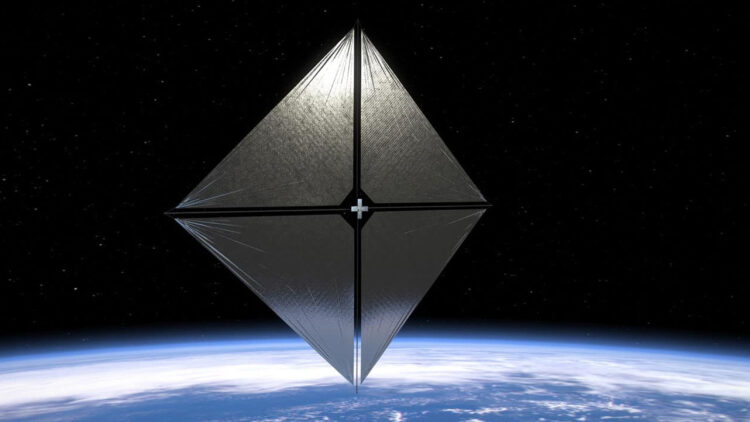NASA’s Advanced Composite Solar Sail System (ACS3) is a revolutionary experiment that showcases innovative solar sail technology. Launched earlier this year, the American space agency aims to develop larger spacecraft using this next-generation propulsion method utilized by ACS3. By harnessing sunlight’s photo pressure instead of relying on traditional fuel, this solar sail represents a huge leap in space travel technology.
Breaking down NASA’s groundbreaking ACS3 solar sail
In April, the ACS3 spacecraft—set atop a Rocket Lab Electron rocket—successfully deployed its impressive 80-square-meter (860-square-foot) sail.
Following its deployment, it now orbits the planet at an altitude of 600 miles. That’s almost double the height of the International Space Station.
The sail’s extensive surface area allows it to reflect sunlight, making it visible even from the ground. Under optimal conditions, ACS3 can shine as brightly as Sirius, the brightest star in the night sky. To catch a glimpse of this craft, users can download the official NASA app, which provides tracking information for sighting opportunities.
Of course, the solar sail’s mission is not just about visibility—it also holds the promise of changing the landscape of deep space exploration.
How the ACS3 solar sail is changing the face of space exploration
Indeed, these lightweight spacecraft allow it to traverse vast distances without relying on heavy fuel. By capturing sunlight, they enable continuous acceleration, leading to quicker journeys across the cosmos.
“The hope is that the new technologies verified on this spacecraft will inspire others to use them in ways we haven’t considered,” says Alan Rhodes, the ACS3 mission’s lead systems engineer at NASA’s Ames Research Center in Mountain View, California.
Another major advantage of these sails is their ability to reduce costs in space exploration. Unlike conventional propulsion systems that depend on finite fuel, solar sails can support long missions by capturing solar energy indefinitely. If the mission successfully demonstrates maneuverability in orbit, it could pave the way for the development of cutting-edge solar sail spacecraft.
For instance, scientists are considering using solar sails for missions aimed at exploring distant celestial bodies, such as Enceladus, Saturn’s sixth-largest moon, and Europa, Jupiter’s fourth-largest moon. Additionally, the Breakthrough Starshot initiative plans to deploy laser-propelled solar sails to reach the Alpha Centauri star system in an effort to discover extraterrestrial life, potentially transforming our understanding of the universe.
Should we be worried about the solar sail’s orbital “tumble”?
Since 29 August, the AS3 spacecraft has exhibited unusual behavior, capturing the attention of astronomers. In fact, observations revealed that the solar sail was “tumbling,” fluctuating in brightness as it orbited the planet.
Marco Langbroek, a Dutch lecturer specializing in optical space situational awareness, explains: “As it rose in the south, it became very bright, reaching magnitude 0 (as bright as the brightest stars in the sky). It then faded again and next displayed a slow brightness variation with multiple bright maxima and very faint minima.
“The brightness variation could be suggestive of a slow tumble or wobble… that must have been initiated after 29 August, when it appeared more steady.”
As such, the peculiar behavior of the ACS3 could impact the design and operation of future solar sail missions. It would require careful adjustments in order to ensure stability and predictability during extended operations, thus laying the foundation for successful missions that depend on solar propulsion.
Nevertheless, NASA’s ACS3 solar sail is a major advancement in deep space exploration technology. Its unique propulsion method could change how we approach space missions, as well as enhance both efficiency and cost-effectiveness. As researchers further investigate its performance, the prospects for future space travel look extremely promising.

